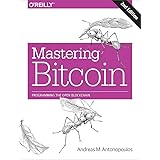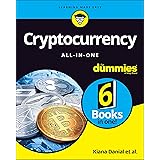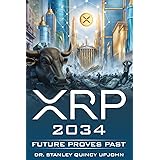Navigating the Nuances of Altseason: Unveiling Market Manipulation Tactics
The cryptocurrency market, an exhilarating frontier of innovation and wealth creation, often presents a labyrinth of volatility and uncertainty. While the promise of an “altseason” — a period of significant growth for altcoins — electrifies many investors, the path to it is frequently fraught with carefully orchestrated maneuvers designed to disorient and capitalize on retail traders. The video above eloquently articulates a brutal truth about altseason that many find difficult to confront.
It highlights how the market, far from being a purely organic entity, is often a battleground where institutional players, often referred to as “whales,” engage in sophisticated psychological warfare. This article aims to expand upon these critical insights, providing a deeper understanding of these manipulative tactics, how to discern genuine market signals from noise, and strategies for fortifying your trading decisions against emotional pitfalls.
The Engineered Confusion: Understanding the Smart Money Playbook
The core of market manipulation lies in its ability to weaponize human emotions, particularly fear and greed. Institutions, requiring immense liquidity to execute large trades without adversely affecting their own positions, actively create conditions that compel retail investors to become that necessary liquidity. Consequently, understanding their playbook is the first line of defense for any shrewd investor.
Consider the classic “smart money brain hack playbook” which often unfolds in a predictable, multi-step sequence:
- Bitcoin’s Sideways Grind: Initially, Bitcoin, the market’s titan, is pushed into a period of prolonged sideways movement. This phase is designed to induce boredom and frustration among investors, prompting them to seek action elsewhere. Imagine if you are holding Bitcoin for weeks, watching minimal price action; your patience might wear thin, leading you to look for more volatile assets.
- Ethereum’s All-Time High Pump: Following Bitcoin’s lull, Ethereum (ETH) experiences a significant pump, often nearing or even surpassing its previous all-time high. This spectacular ascent captures everyone’s attention, generating immense FOMO (Fear Of Missing Out). However, the price surge is typically followed by a slight pullback, triggering a wave of confusion. Is this a genuine breakout or merely a deceptive fakeout? This carefully timed move simultaneously ignites both euphoria and terror within the market.
- The Assault of Scary Headlines: Concurrently, a barrage of negative headlines is unleashed. News of “massive ETF outflows,” or declarations that “September is historically awful for crypto,” permeates social media and financial news outlets. This “full spectrum assault” on emotions, as described in the video, aims to amplify panic. For instance, if you see reports of significant institutional selling, you might conclude that the bull run is over, compelling you to sell your assets at a discount.
These coordinated efforts are not random; they are a masterclass in psychological warfare. While retail investors are gripped by panic and confusion, the whales calmly accumulate assets at discounted prices, leveraging the emotional reactions of the unprepared.
Debunking Common Market Lies: Knowing Their Deceptions
To effectively navigate these turbulent waters, it is imperative to identify and debunk the prevalent lies propagated during these manipulative phases. The video highlights three significant narratives frequently weaponized against the average trader.
Lie Number One: “ETFs Are Dumping, Institutions Are Leaving”
Reports of massive outflows from Bitcoin and Ethereum ETFs can indeed be alarming. Remember recent headlines suggesting the bull run was over due to significant institutional selling? This type of news often leads to widespread panic selling. However, such initial “outflows” can often be a calculated shakeout. As the video revealed, just days after bearish ETF outflow headlines, a staggering $600 million worth of inflows was observed for ETH, which subsequently set a new all-time high. This illustrates how fleeting and deceptive short-term data, when amplified, can be used to manipulate sentiment, leading many to sell just before an upward reversal.
Lie Number Two: “September is Always a Bad Month for Crypto”
The “September seasonality curse” is a narrative that resurfaces annually, asserting that September is historically a “bloodbath” for crypto markets. While historical averages might show some truth to this, the crucial insight is that institutions often weaponize widely accepted narratives. When everyone anticipates a market dump, it creates an opportune moment for smart money to accumulate. Imagine if every trader expects a crash; their collective fear allows large entities to buy cheap. The video mentions that in the last 20 years, all three Septembers coinciding with Federal Reserve rate cuts were bullish for the SPX, and one out of two were bullish for Bitcoin, according to Nick. This nuanced perspective suggests that broader economic factors, such as impending rate cuts, can significantly override historical seasonal patterns, demonstrating that widespread expectations can often be inverted for strategic accumulation.
Lie Number Three: “The $2.6 Billion Whale Rotation is Your Signal to Ape In”
News of a substantial whale rotation, such as a $2.6 billion transfer from Bitcoin to Ethereum, is undeniably bullish for Ethereum in the long term. However, the immediate interpretation presented by many crypto outlets is often manipulative. This type of headline is frequently blasted across platforms to create the illusion that altseason has definitively begun, urging retail investors to “ape in” (invest heavily and quickly) into altcoins immediately. This is a classic trap designed to draw in emotional investors at potentially unfavorable entry points, enabling whales to offload their positions into the ensuing retail frenzy. Therefore, distinguishing genuine bullish indicators from amplified, immediate calls to action is paramount.
Data is Truth: The Four Horsemen of the Altpocalypse
In a market saturated with emotional narratives and manipulative tactics, hard data serves as an unwavering compass. The video introduces the “Four Horsemen of the Altpocalypse” – four critical indicators that must align before a true and sustainable altseason can genuinely commence. Relying on these data points allows investors to cut through the noise and make informed decisions.
Horseman One: ETH Breaks and Holds Above Its All-Time High
Ethereum’s ability to not just touch, but decisively break and *hold* above its previous all-time high (ATH) is a primary indicator. While ETH briefly touched $4,953, it subsequently failed to maintain this level, getting “smacked down immediately.” A mere wick above the ATH is insufficient; we need to observe daily and weekly candles comfortably closing above the old high. This sustained breakout indicates strong, fundamental buying pressure rather than a fleeting surge, signifying that the market has absorbed resistance at that level and is ready for further ascent.
Horseman Two: Bitcoin Dominance Breaks and Holds Below 60%
Bitcoin dominance (BTCD) measures Bitcoin’s market capitalization relative to the total cryptocurrency market. A significant drop in BTCD, specifically below the 60% threshold, is often a strong signal for altseason. This phenomenon indicates that capital is rotating out of Bitcoin and into altcoins, suggesting an increased appetite for risk among investors. The video notes that Bitcoin dominance recently dropped to around 58% and has held below this for two weeks, signaling that this horseman is indeed saddling up. This shift represents a crucial transfer of liquidity, paving the way for altcoin rallies.
Horseman Three: The “Alt Be Back” Chart Hits 1
The “Alt Be Back” chart is a sophisticated metric comparing Ethereum’s market capitalization to the combined market capitalization of all other altcoins (excluding Bitcoin). When this ratio reaches 1, it means Ethereum’s market cap equals that of all other altcoins. Historically, this equilibrium has preceded major altseasons in previous cycles. At present, the ratio stands at approximately 1.4, indicating Ethereum is still larger than the collective altcoin market. However, the video highlights that this ratio is falling faster than ever, suggesting a rapid approach to the critical “1” mark. Once ETH becomes as large as all other altcoins combined, the sheer volume of capital within ETH tends to spill over into the broader altcoin market, igniting widespread pumps.
Horseman Four: ETH Dominance Reaches Approximately 16%
Similar to Bitcoin dominance, Ethereum dominance (ETHD) tracks Ethereum’s market share of the entire crypto market. When ETH dominance reaches approximately 16%, it historically signals a point where Ethereum has become significantly strong. This threshold suggests that ETH has absorbed a substantial portion of available capital. As ETH becomes “too strong,” the liquidity that has concentrated within it begins to flow outwards into other altcoins, providing the necessary fuel for their respective rallies. The video notes that ETH dominance recently touched 15%, indicating that this horseman is also close to arriving, preparing for the collective charge.
Currently, while one horseman (Bitcoin dominance below 60%) has arrived, two are nearing their targets, and one (ETH holding ATH) merely poked its head out. Until all four are unequivocally present and holding their positions, the market is likely experiencing coordinated manipulation rather than a true, sustainable altseason.
The Philosophy of Patience: It Will Happen When It Happens
A crucial lesson, often overlooked in the frenzy of market speculation, is the importance of patience and detachment from precise timing. The perpetual quest to predict the exact start date of altseason is, as Nick wisely points out in the video, a “loser’s game.” This incessant need to time the market frequently leads to disappointment, missed opportunities, or premature actions.
Imagine if you are constantly predicting altseason will start next week, only for it to be delayed. You might become disillusioned and sell too early. Conversely, if it starts earlier than expected, you might dismiss it as a fakeout, missing the entire move. Successful investing in this volatile landscape is not about divination; it is about preparedness. Your primary objective should be to understand the definitive signals, such as the Four Horsemen, and to be ready to act decisively when they align, rather than succumbing to speculative predictions or emotional reactions.
By focusing on data-driven signals and cultivating emotional resilience, investors can construct a robust defense against market manipulation. Altseason will undoubtedly arrive when the underlying conditions, indicated by verifiable data, confirm its presence. Trade smart, remain informed, and stay steadfast against the psychological tactics designed to separate you from your valuable assets.







